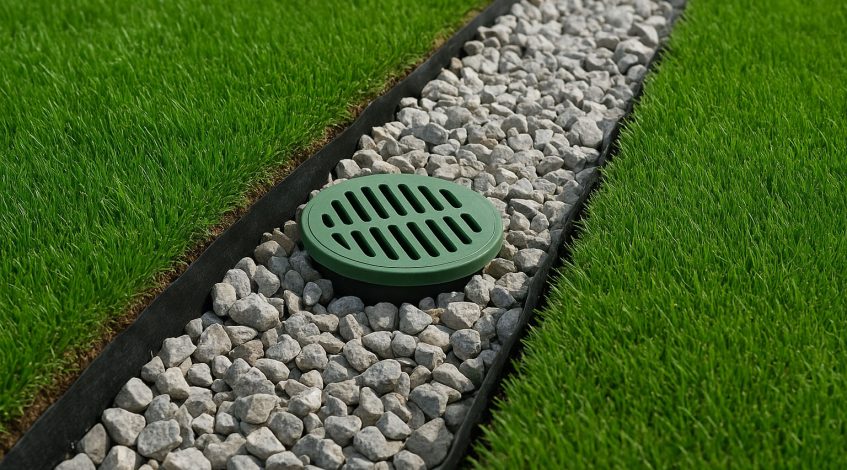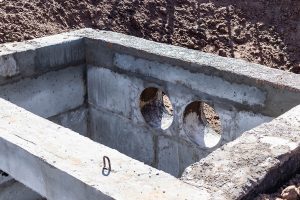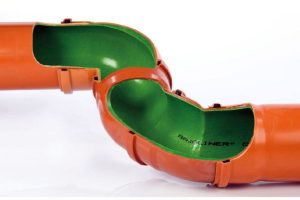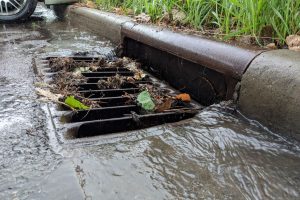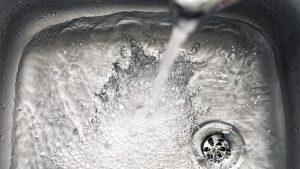Water can stand in your yard for a long time after the rain. The issue becomes more serious when your basement starts leaking. Your yard will always be a source of the problem if your lawn drainage is poor. Apart from the inconvenience of mowing your lawn more frequently, lingering drainage issues compromise the integrity of your home’s foundation.
You should not have to deal with flooding, drainage issues, or any plumbing problems. Plumbers advise homeowners with flooding yards to install a french drain system – a proven solution to many drainage issues.
This blog walks you through French drain installations for waterlogged yards. It’s a practical, affordable fix that directs water away and makes your lawn safer and more appealing.
Key Takeaways:
- French drains offer a reliable way to manage water and preserve structural integrity.
- Variations in property elevation may result in water draining from higher yards into lower ones. Yards situated below surrounding properties tend to collect excess runoff.
- Persistent water exposure at the base of a home may result in interior mould, mildew, and odours that compromise health.
What are French Drains?
It is a water management system that channels excess moisture away from the structure. It features a narrow trench packed with drainage gravel or stones, with a slotted or perforated pipe installed along the bottom. This trench is positioned in areas prone to pooling—typically near the base of exterior walls, around basements, or along low-lying sections of the yard.
Unlike typical box drains which drain in one spot, french drain systems collect water over the entire length of the drain as opposed to one dedicated area. Gravity guides the water along the drain to a discharge point or stormwater system connection. This makes them highly effective for large lawn areas and backyard drainage.
Recently, Best Plumbers Club spoke with Jamie from Deadset Digging, an Adelaide excavation specialist, to get his take on French drain systems. Jamie highlighted that while many homeowners see them as a fix for soggy lawns, the bigger picture is long-term protection of the home’s foundation and prevention of costly water damage. He explained that a well-installed French drain not only manages surface runoff but also relieves subsurface water pressure, making it one of the most effective solutions for properties that suffer recurring flooding issues.
Signs Your Yard Needs a French Drain
| Signs | Drainage Impact |
| Soggy or Mushy Grass | Grass that feels spongy or soft underfoot indicates poor drainage. |
| Cracks in Your Foundation | Water will always find a path of least resistance. When it can’t drain properly, it may seep into your foundation. |
| Mildew or Musty Smells | Water collecting near your home’s foundation can seep indoors, causing mildew, mould, and unpleasant odours. |
| Standing Water in Low Spots | Pooled water in certain parts of your yard after rain is a sign of poor grading or soil compaction. |
What Causes Poor Yard Drainage?
If the problem stems from your yard, check for improper grading or poor soil composition. Water can only soak into the ground effectively when the soil contains a balanced mix of sand and minerals. In contrast, hard, compacted soil—such as clay—prevents proper absorption, causing water to pool and remain on the surface.

Your Neighbour’s Yard Might Be Flooding Yours
Differences in elevation between properties can also cause water to flow from higher yards into lower ones. If your yard sits slightly below your neighbours’, it naturally becomes the collection point for excess runoff.
While proper drainage systems and improved soil composition can usually resolve the issue, poor soil or inadequate drainage in a lower-level yard can quickly turn a manageable situation into a serious and recurring problem.
How do you install a french drain?
While most people hire a local drain plumber, it is possible to tackle the job as a DIY project—depending on the level of work involved.
- Dig a trench along the planned drainage path.
- Install the perforated drainage pipe at the base of the trench.
- Line both the bottom and top of the pipe with washed drainage gravel.
- Maintain a consistent downward slope throughout the trench to allow proper water flow.
- In level yards, ensure the trench slopes gently toward the discharge point (usually the edge of the yard).
- Begin the trench at the highest point of the yard and extend it to the lowest point.
- Complete any remaining finishing tasks to secure the drain and restore surface landscaping.
If the installation is near a neighbour’s property, be sure to inform them and seek their approval beforehand. It’s also essential to contact Dial Before You Dig to check for any underground gas lines or electrical cables, preventing potential damage or service disruptions.
Best Plumbers Club Connects You With the Right Drainage Specialist
For suburban properties, it may be possible to cut an opening in the curb to allow drainage pipes to discharge water into the street, where it can flow into a designated storm drain. This type of modification will lead you to search for a “plumber near me” who is familiar with local regulations.
Need help with a french drain installation? Newcastle plumbers, Penrith plumbers, Brisbane plumbers, Adelaide plumbers, no matter where you are Best Plumbers Club has you covered.
Frequently Asked Questions
What is a French drain system?
A trench filled with gravel and a perforated pipe that redirects surface water and groundwater. To prevent flooding or foundation damage.
How to install a French drain system?
Dig a trench that slopes downward, line it with landscape fabric, add a layer of gravel, place a perforated pipe at the bottom, cover it with more gravel, and fold the fabric over before backfilling with soil or turf.
What does a French drain system look like?
A subtle but powerful drainage solution that looks like a hidden underground. It is often barely noticeable. It may be covered with soil, grass, or decorative gravel. Below ground, the system consists of:
- A narrow trench (typically 150–300mm wide)
- A base layer of washed drainage gravel
- A perforated PVC or corrugated pipe
- More gravel layered above the pipe
- Optional landscape fabric to prevent soil intrusion
- Backfilled with soil or topped with turf or stones for a clean finish

